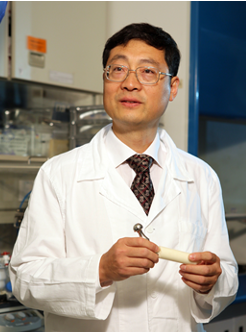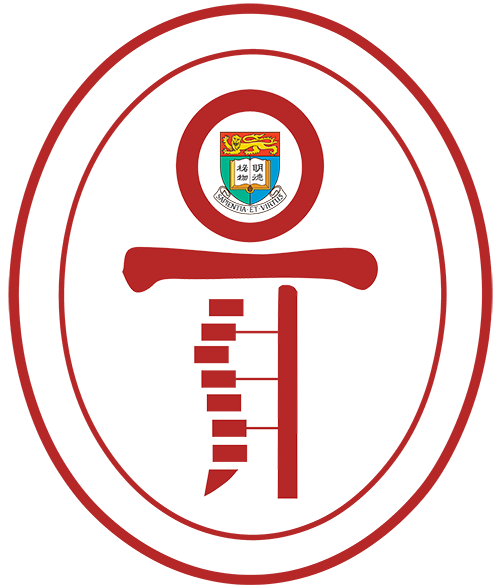Biography

LU, Weijia William 吕维加
Ph.D, MHKIE
Professor, Ng Chun-Man Professor in Orthopaedic Bioengineering
Division Chief, Orthopaedic Research Center
Chairman, Research & High Degree Committee
Link to HKU Scholars Hub
ORCID iD: 0000-0002-5780-2886
Contact email
Biography
Professor Lu, Ng Chun-Man Endowed Professor in Orthopaedic Bioengineering, obtained his PhD degree and the “Distinguished Graduate Award” from the University of Waterloo, Canada, in 1994. He joined the Department of Orthopaedics & Traumatology, The University of Hong Kong (HKU) in 1995 as an Assistant Professor and was promoted to Associate Professor in 2001, and full Professor in 2009. He established Orthopaedic Research Centre in 1995 and has served as director since then. Professor Lu has specific experience in the areas of Orthopaedic Biomechanics, Biomaterials, 3-D Bioprinting-technology as well as Clinical Bioengineering teaching and research. He has achieved substantial international recognition in the area of bioengineering and is widely acknowledged as top 1% scholars (2009-2018) according to ISI’s Essential Science Indicators. Professor Lu has consistently secured a significant proportion of the research funding of HK$57 millions from Hong Kong and RMB55 millions from PR China in his areas of activity from a number of major funding bodies, including as chief scientist of the National Key R&D Programs, funded RMB27.44 millions in 2019 by the Ministry of Science and Technology (MoST). He held a number of patents for his innovations and has published more than 290 papers in international Peer Reviewed Journals, with more than 10,000 citations and H-index 55.
Research Interests
- Biomechanics: Spinal Biomechanics, human tissue mechanical property evaluation and definition, Medical Implant biomechanical property evaluation;
- Biomaterials: Novel biomaterials development, bioactive bone cement fabrication and evaluations, Scaffold materials development, In vitro and in vivo biomaterials evaluation
- 3-D Bioprinting: To develop functionable human tissues and organs including full-thickness skin, cornea, bone, cartilage and major blood vessels etc.
Clinical Interests
- Degenerative Bone, Disc and Joints Research
- Osteoporotic bone fractures
Selected publications
- Jin Y, Zhang T, Lui YF, Sze KY, Lu WW*. The measured mechanical properties of osteoporotic trabecular bone decline with the increment of deformation volume during micro-indentation. J Mech Behav Biomed Mater. 2019 Nov 19; 103:103546. doi:10.1016/j.jmbbm. 2019.103546. [Epub ahead of print] PubMed PMID: 31786511.
- Sun M, Hu L, Wang S, Huang T, Zhang M, Yang M, Zhen W, Yang D, Lu W, Guan M, Peng S. Circulating MicroRNA-19b Identified from Osteoporotic Vertebral Compression Fracture Patients Increases Bone Formation. J Bone Miner Res. 2019 Oct 15. doi: 10.1002/jbmr.3892. [Epub ahead of print] PMID: 31614022
- Wang Z, Zhao J, Tang W, Hu L, Chen X, Su Y, Zou C, Wang J, Lu WW, Zhen W,Zhang R, Yang D, Peng S. Multifunctional Nanoengineered Hydrogels Consisting of Black Phosphorus Nanosheets Upregulate Bone Formation. Small. 2019 Oct;15(41):e1901560. doi: 10.1002/smll.201901560. Epub 2019 Aug 18. PubMed PMID: 31423735.
- Kulper SA, Fang CX, Ren X, Guo M, Sze KY, Leung FKL, Lu WW. Development and initial validation of a novel smoothed-particle hydrodynamics-based simulation model of trabecular bone penetration by metallic implants. J Orthop Res. 2018 Apr; 36(4):1114-1123. doi: 10.1002/jor.23734. Epub 2017 Nov 16. PubMed PMID: 28906014.
- Chen Y, Hu Y, Yu YE, Zhang X, Watts T, Zhou B, Wang J, Wang T, Zhao W, Chiu KY, Leung FK, Cao X, Macaulay W, Nishiyama KK, Shane E, Lu WW*, Guo XE. Subchondral Trabecular Rod Loss and Plate Thickening in the Development of Osteoarthritis. Journal of Bone and Mineral Research, 2018 Feb; 33(2):316-327. doi: 10.1002/jbmr.3313. Epub 2017 Nov 16. PubMed PMID: 29044705.
- Zhai X, Ruan C, Ma Y, Cheng D, Wu M, Liu W, Zhao X, Pan H, Lu WW*. 3D-Bioprinted Osteoblast-Laden Nanocomposite Hydrogel Constructs with Induced Microenvironments Promote Cell Viability, Differentiation, and Osteogenesis both In Vitro and In Vivo. Adv Sci (Weinh). 2017 Nov 24; 5(3):1700550. doi: 10.1002/advs.201700550. eCollection 2018 Mar. PubMed PMID: 29593958; PubMed Central PMCID: PMC5867050.
- Chen Y, Huang YC, Yan CH, Chiu KY, Wei Q, Zhao J, Guo XE, Leung F, Lu WW*. Abnormal subchondral bone remodeling and its association with articular cartilage degradation in knees of type 2 diabetes patients. Bone Res. 2017 Nov 7; 5:17034. doi: 10.1038/boneres.2017.34. eCollection 2017. PubMed PMID: 29134132; PubMed Central PMCID: PMC5674679.
- Gehua Zhen, Chunyi Wen, Simon Mear, Ting Wang, Frederic B Askin, Xiaofeng Jia, Franca Frassica, Weizhong Chang, Janet Crane, Jie Yao, Tariq Nayfeh, Dmitri Artemov, Andrew Cosgarea, John Corrino, Mei Wan, William Weijia Lu and Xu Cao. Inhibition of TGFβ1 Activity in Subchondral Bone Prevents Onset of Injury-Induced Osteoarthritis. Nature Medicine. 2013. Jun;19(6):704-12.

